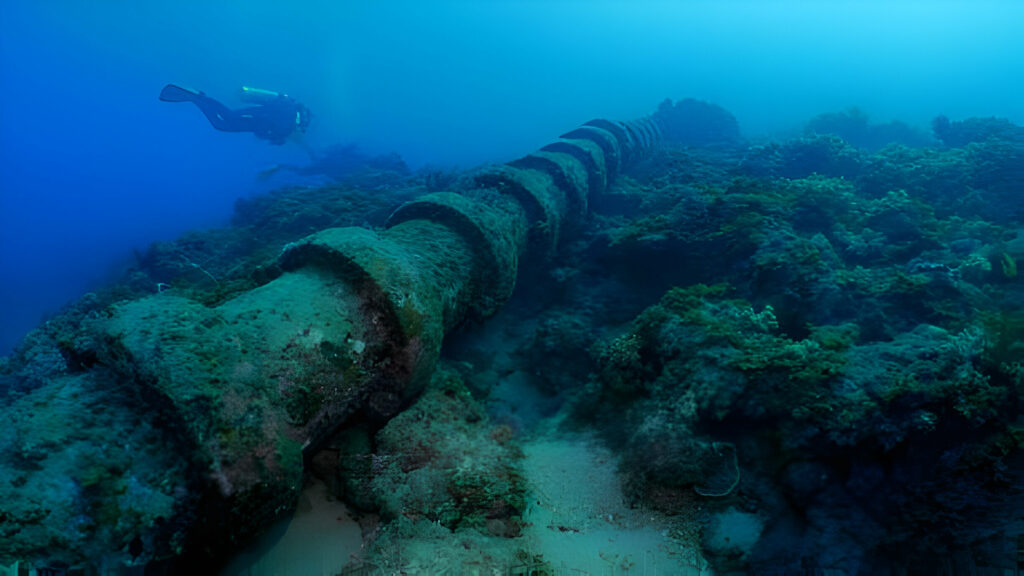
Building underwater is one of the most complex and demanding forms of construction in civil engineering. Whether it’s laying the foundation for a bridge, constructing offshore wind turbines, or installing underwater pipelines, these projects require specialized methods, advanced equipment, and a deep understanding of both engineering and marine environments. This article breaks down how underwater construction works, focusing on the core techniques and technologies that make it possible to build beneath the surface.
Understanding the Environment: The First Challenge
Before any underwater construction begins, engineers must thoroughly assess the site. Unlike dry land, underwater environments are dynamic and unpredictable. Factors such as water depth, currents, tides, seabed composition, and marine life all affect how a project is designed and executed.
Key Pre-Construction Considerations:
- Hydrographic surveys to map underwater terrain
- Soil analysis to understand the seabed’s bearing capacity
- Environmental impact studies to minimize harm to ecosystems
- Weather and tidal forecasting to schedule work safely
Only after this groundwork is completed can construction plans be developed.
Core Techniques in Underwater Construction
Several specialized methods have been developed to address the unique challenges of underwater building. The technique used depends on the depth, location, type of structure, and water conditions.
1. Cofferdams
A cofferdam is a temporary enclosure built to exclude water from an area. Once in place, the water is pumped out, creating a dry workspace on the seabed.
- Best for: Shallow waters, bridge footings, docks
- Materials used: Steel sheets or concrete
- Advantages: Allows traditional construction methods in a dry environment
- Limitations: Not suitable for deep or fast-moving water
2. Caissons
Caissons are watertight structures (open, box, or pneumatic types) that are lowered into the water and then filled with concrete or used as foundations.
- Best for: Bridge piers, offshore platforms, large foundations
- How it works: Workers may enter the caisson in some cases (especially in pneumatic caissons) to excavate material from inside before it’s filled
- Advantages: Stable and permanent
- Challenges: Installation is complex and requires precision
3. Tremie Concrete Placement
This technique is used to pour concrete underwater without washing out the cement. Concrete is placed through a tremie pipe that extends from above water to the placement site.
- Best for: Pouring foundations or footings underwater
- Key benefit: Maintains concrete integrity in submerged conditions
- Technique: The pipe remains buried in the poured concrete to prevent contamination from water
4. Sheet Piling
Steel sheet piles are driven into the seabed to create retaining walls or enclosures.
- Best for: Shoring up excavation areas, retaining earth, creating cofferdams
- Advantages: Quick to install and remove, reusable
- Limitations: Not ideal for deep water or soft soils
5. Underwater Welding and Cutting
Often needed for assembling or repairing submerged steel structures, underwater welding can be performed in two ways:
- Wet Welding: Done directly in the water; faster but with lower weld quality.
- Dry Welding (Habitat Welding): Performed inside a sealed, dry chamber placed around the work area; offers higher precision and strength.
Technologies That Power Underwater Construction
Technology plays a major role in modern underwater construction, making tasks safer, faster, and more accurate.
1. Remote Operated Vehicles (ROVs)
ROVs are tethered robots that can perform inspections, welding, and small construction tasks without needing divers.
- Uses: Deep-sea tasks, hazardous environments, precision inspections
- Benefits: Reduced human risk, longer work times, real-time data feedback
2. Autonomous Underwater Vehicles (AUVs)
Unlike ROVs, AUVs are untethered and operate independently. They’re used primarily for surveying and mapping.
- Application: Site assessments, seafloor mapping, environmental monitoring
3. Sonar and Subsea Imaging
Sonar systems and underwater cameras provide real-time visual and structural data.
- Multibeam sonar: Creates 3D maps of underwater surfaces
- Laser scanning: Provides precise distance and shape data in turbid water
4. GPS and Underwater Positioning Systems
Since GPS signals don’t work underwater, engineers use ultra-short baseline (USBL) or long baseline (LBL) acoustic positioning systems to track equipment and personnel beneath the surface.
Specialized Equipment and Materials
Because underwater environments are harsh, construction materials and tools must be designed to withstand corrosion, pressure, and water exposure.
Key Materials:
- Marine-grade concrete: Enhanced with anti-corrosion additives
- Epoxy coatings: Protect steel from saltwater corrosion
- HDPE and composite materials: Used in pipelines and structures for durability and flexibility
Common Equipment:
- Hydraulic tools for drilling, bolting, and cutting
- Crane barges and jack-up platforms for offshore work
- Air compressors for pneumatic caissons and diving operations
Safety in Underwater Construction
Safety is paramount. Projects involve multiple hazards: poor visibility, strong currents, pressure changes, and potential equipment failure. Measures include:
- Commercial diver certification and training
- Redundant life-support systems
- Strict communication protocols
- Emergency evacuation plans
- Use of ROVs in risky environments
Underwater work is also subject to regulation by agencies like OSHA, the International Marine Contractors Association (IMCA), and local maritime authorities.
Modern Applications and Future Outlook
Underwater construction is integral to many infrastructure and energy initiatives. Examples include:
- Subsea tunnels and metro systems (e.g., the Channel Tunnel)
- Offshore wind farms (e.g., in the North Sea)
- Port and harbor expansions to handle global shipping demand
- Underwater data cable networks enabling global internet access
With climate change prompting a rise in sea levels, and the push for offshore renewable energy, the demand for underwater construction expertise is only expected to grow. Innovations like 3D printing underwater and AI-assisted planning tools may soon transform how we build beneath the surface.
Conclusion
Underwater construction is a remarkable blend of engineering, innovation, and problem-solving. By employing specialized techniques like cofferdams, caissons, and tremie concrete, and leveraging technologies such as ROVs, sonar, and advanced materials, engineers are making it possible to build in some of the most challenging environments on Earth.
Whether you’re working on a port upgrade, an underwater tunnel, or offshore infrastructure, understanding how these systems work is key to safe, efficient, and sustainable development below the waterline.
